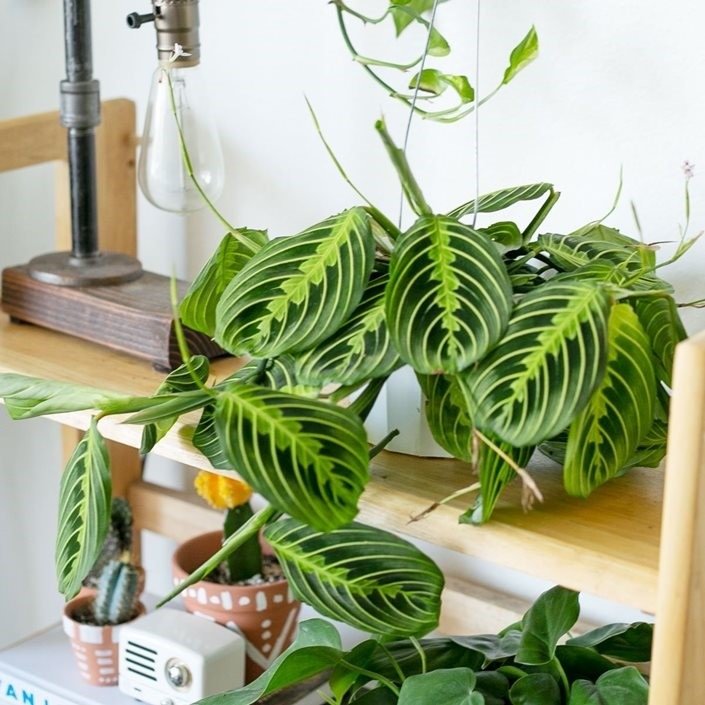Table of Contents Show
The Maranta leucantha is a small, inconspicuous perennial native to the southeastern United States. Some people believe the prayer plant has spiritual qualities that can benefit its owner.

This plant is known for attracting positive energy and healing properties. Is there something spiritual about this plant? Some say this succulent, native to Mexico and Central America, has a powerful religious aura.
It is an effective tool for spiritual cleansing and purification. People use it to ask for blessings, resolve conflicts, and connect with the divine. So, what makes it like this? How did it come about, and what are the facts? Let’s check them all in this blog.
History
The Maranta leuconeura plant is a tropical plant native to Central and South America. The plant is so named because prayer practitioners often use its leaves to line their prayer books.
These plants are popular houseplants because they are relatively easy to care for and add a splash of color to any room. The history of this plant is a bit mysterious, but it is thought that it was first grown in Europe in the 18th century.
The plant was introduced to the United States in the early 19th century and became famous as a houseplant. Today, it can be found in homes all over the world.
It is relatively easy to care for. They prefer bright light but will tolerate lower light levels. This plant likes moist soil but can accept dry soil conditions as well.
Read Also:
Botany
It is an annual herb that typically grows to about 18 inches. The plant has smooth, green leaves and small, white flowers. This plant has a long history of use by Native Americans, who used it for medicinal purposes.
Its roots are edible and have a slightly sweet taste. The leaves and flowers can also be eaten but are somewhat bitter. Moreover, it was traditionally used by Native Americans to treat respiratory problems, fever, and other illnesses.
Folklore
The folklore surrounding this plant is vast and varied. Some say that it can be used to heal wounds, while others believe it can bring good luck or ward off evil.
There are even those who claim that the plant has magical properties and can be used to grant wishes. Despite all of the speculation, no concrete evidence supports these claims.
So, you will have much folklore about this plant. One story is that if you bury it, this will grow roots in China and bring you good luck. Another story is that keeping a prayer plant in your bedroom will get you good dreams.
Care
The Maranta leuconeura is a beautiful houseplant that is easy to care for. Here are some tips for you:
- This plant prefers high humidity and moist soil. You can increase the humidity around your plant by placing it in a bathroom or near a humidifier.
- It needs plenty of light but should be kept from direct sunlight. It’s best to find a spot near a window.
- Maintain moist but not wet soil by watering your plant regularly.
- Fertilize this plant once a month with a balanced liquid fertilizer.
- In the winter, move it to an excellent, dark spot and water sparingly.
Uses
Its long history of uses by humans has been used for food, medicine, and as a religious symbol.
- The leaves and seeds of this plant are edible. In addition to being high in protein, they are also high in vitamins A and C.
- Its seeds can be ground into flour to make bread, cakes, and other foods. The flowers can be used to make jams, jellies, and syrups.
- This is also used to treat a variety of medical conditions. It has been used to treat fevers, headaches, diarrhea, and other health problems.
Last to Say
There is something spiritual about the prayer plant. It is a beautiful and unique plant that has been used for spiritual purposes for centuries. This powerful plant can help us connect with the spiritual world.
If you are interested in learning more about this plant and its spiritual properties at Plantele, you can do some research online or at your local library. Thanks for reading!
Reference:
1: The impact gap: South America by the numbers
Published Time: 11 June 2014
https://doi.org/10.1038/510202a
2: The bio generation of green odor by green leaves
Published Time: Received 15 April 1993, Available online 9 March 2001.
https://doi.org/10.1016/0031-9422(91)80003-J
3: A narrative of what wishes what it wishes it to be’: An Introduction to ‘Creative Writing and Art History
Published Time: 2011
http://dx.doi.org/10.1111/j.1467-8365.2011.00817.x
4: Formulation of liquid fertilizer for sorghum (Sorghum bicolor (L.) Moench) using vermicompost leachate
Published Time: Received 12 September 2007, Revised 1 December 2007, Accepted 6 December 2007, Available online 4 March 2008.









